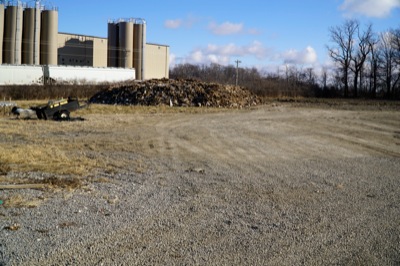Monday, February 5th, 2018
Algae studies garner national attention
Officials discuss research, projects on Grand Lake
By Ed Gebert
CELINA - Environmental officials from Lake Champlain in Vermont are seeking the advice of Grand Lake officials and researchers on the workings of the treatment trains.
New Lake Improvement Association President Nick Rentz told LIA members at their Saturday meeting that Lake Champlain officials learned about the treatment trains through a story in The Journal of Environmental Quality.
"The Journal of Environmental Quality is one of the most prestigious journals in all academia in terms of environmental issues," Rentz said. "The cover of this is related to Dr. Stephen Jacquemin, researcher here at Wright State-Lake Campus, (and) his research in what he did in the watershed. It's absolutely tremendous that we're getting this kind of national attention out of it. It's wonderful. And what it says is, not only are we doing research, we're doing nationally-accredited research."
Later at the meeting, Tom Knapke, chairman of the Lake Restoration Commission, discussed the conversation with Lake Champlain officials.
"About two weeks ago, we got a call from the state of Vermont about the treatment trains. The people from Vermont were referred to us by the Ohio (Environmental Protection Agency)," he said. "Dr. Jacquemin and I had an interesting talk with them for about two hours two weeks ago. They are having a problem in Lake Champlain."
That lake is the nation's sixth largest body of water and is situated on the north end of the border between New York and Vermont and runs up into Quebec. Knapke did not describe the specific problems in Vermont, but said they had called back Friday to continue the conversation.
"We think they're going to come out here to look at what we've done," Knapke said. "So I just wanted to thank you for all the input from the county to the LIA and Ag Solutions for what we've done with those treatment trains. They are working."
Vermont's top environmental regulator wants to fund water quality improvements through Vermont's capital bill, money usually used to pay for large construction projects.
Secretary of the Agency of Natural Resources Julie Moore released a plan in October that said the state should commit $22 million a year to fund water quality improvements ultimately designed to clean up Lake Champlain, where phosphorus runoff into the lake has caused toxic blue-green algae blooms that has forced the closure of beaches and decreased some lakeside property values.
The state will have to spend an estimated $1 billion over the next 20 years to address the problem, according to policy makers.
Knapke also reported that the LRC this year is planning to test the trains; the littoral wetlands, where water flows from the trains; and five locations in the middle of the lake for phosphorous and other nutrient content. Gathering and testing water samples will entail using students from Lake Campus from March through the end of the season in October or November.
The testing will be paid for by the LRC, which received a generous donation to cover all the costs, Knapke said.
Other projects on the LRC's list this year include the construction of more rock walls and dredging at West Beach at Villa Nova in an effort to improve the shoreline and water quality. The group also is working to purchase land for the proposed treatment train on Big and Little Chickasaw creeks.
Tom Grabow, dredging operations manager, introduced members of his Grand Lake crew to the LIA membership. They removed 455,550 cubic yards of material from the lake in 2017, an approximate 10 percent increase over 2016. Grabow said his crews have increased removal by 10 percent every year since 2011.
"Our objective every year is to continue to get better, and we've done that, he said, noting that many variables must be taken into account when dredging, including weather, mechanical breakdowns and the material being dredged. "I can't promise you we'll get better every year. I'm not sure. We haven't stopped yet. So we're going to keep moving forward, trying to be the best at what we do."
Grand Lake State Park director Dave Faler said the lake level is 2.67 inches below the notch. At this time last year the level was 4.21 inches below. The level was adjusted by opening the drains 60 inches on Nov. 22 with a lake level at 9.23 inches above the notch and closed Dec. 11 at a level of 8.958 inches below the notch. The water lever has steadily risen since then but slowly due to the lower than average precipitation.
Ag Solutions Coordinator Theresa Dirksen updated members on efforts to keep excess phosphorus from running off into the watershed. She said a manure dewatering pilot study is scheduled for late this month, and an anaerobic digestion program that would require little to no investment from local producers is in the early discussion stages.
- The Associated Press contributed to this story.

